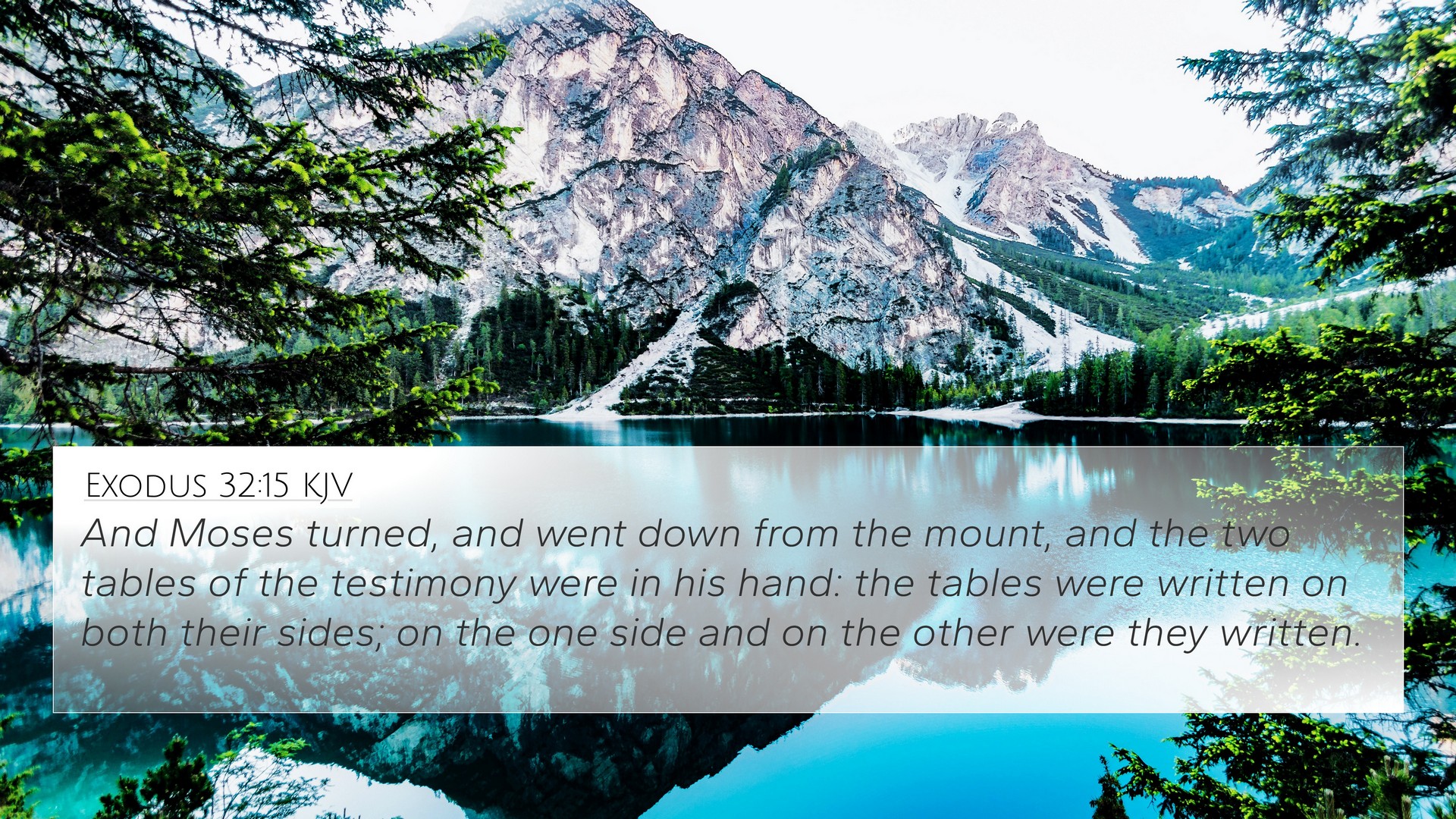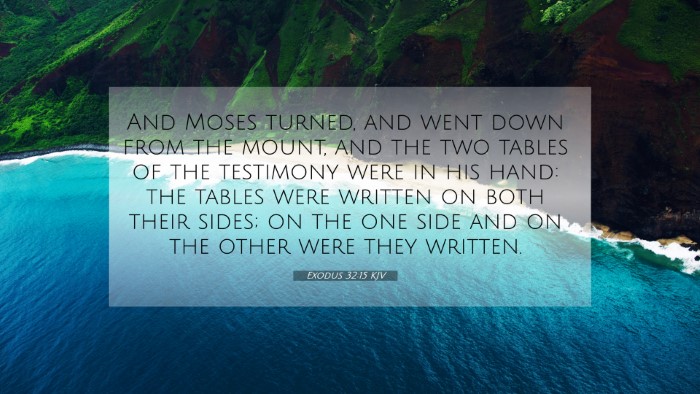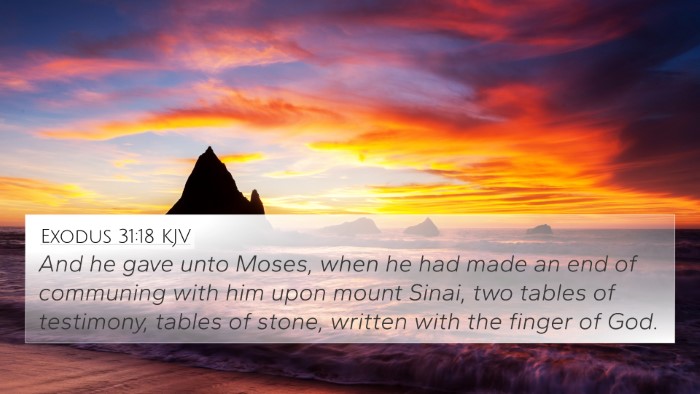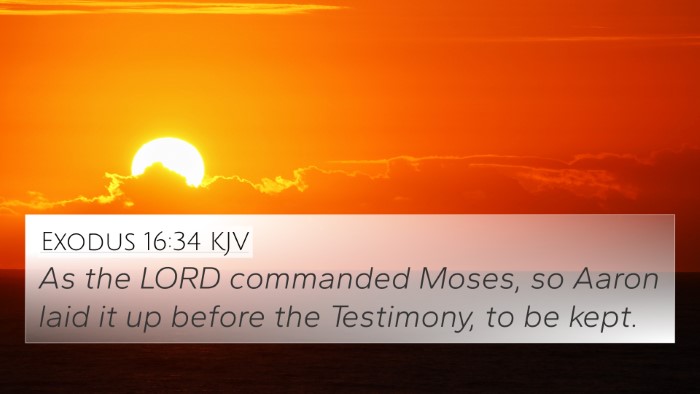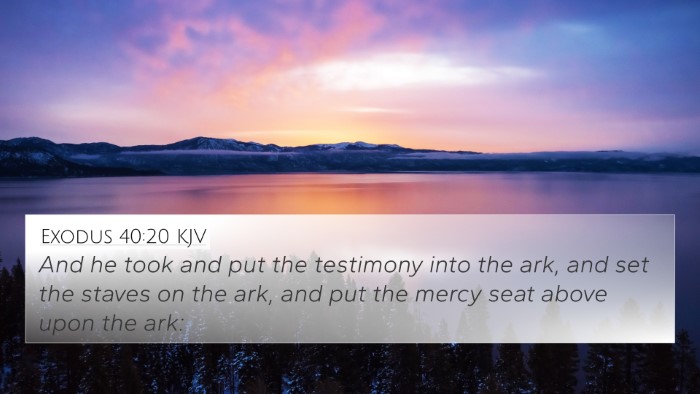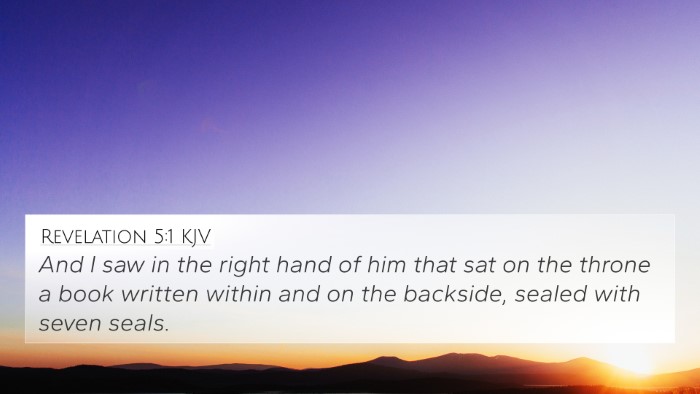Understanding Exodus 32:15
Exodus 32:15 reads: "And Moses turned, and went down from the mount, and the two tables of the testimony were in his hand: the tables were written on both their sides; on the one side and on the other were they written."
Summary and Analysis
The verse is pivotal in the narrative of the Israelites and their covenant with God. It describes the return of Moses from Mount Sinai with the stone tablets containing the Ten Commandments. Various commentaries provide insights into the significance of this moment:
-
Matthew Henry:
Henry highlights the importance of the tablets as a symbol of God's covenant, emphasizing that they signify the law given to Israel. The dual writing reflects completeness, underscoring that the commandments were intended to govern all aspects of life.
-
Albert Barnes:
Barnes points out that the writing on both sides illustrates fullness. The emphasis on Moses carrying these tablets illustrates both his role as mediator and the weighty responsibility he has in conveying God's will to the people.
-
Adam Clarke:
Clarke elaborates that the dual writing could signify the dual relationship of God and His people, also indicating that the commandments apply to both personal and communal life. Clarke underscores that Moses coming down the mountain is a pivotal moment of revelation and responsibility.
Cross References and Thematic Connections
Exodus 32:15 relates to several other Biblical texts, demonstrating thematic and scriptural connections:
- Exodus 20:1-17 - The actual giving of the Ten Commandments.
- Deuteronomy 10:1-5 - A recounting of the creation and content of the tablets.
- Romans 7:12 - Paul's perspective on the law being holy and good.
- 2 Corinthians 3:3 - The contrast between the old covenant written on stone and the new covenant written on hearts.
- Jeremiah 31:33 - The promise of a new covenant where the law will be written on hearts.
- Hebrews 8:6-13 - Discussion of the superiority of the new covenant over the old.
- Matthew 5:17 - Jesus' affirmation of the law and its purpose.
Thematic and Comparative Analysis
When conducting a comparative Bible verse analysis of Exodus 32:15 with other passages, we can observe the continuity of God's message throughout the Scriptures. The relationship between God and His people is deepened and redefined through these laws:
- This verse serves as a direct link to the establishment of divine law, while also providing a lens through which we understand human responsibility in observing that law.
- The repetition of themes of obedience and covenant throughout the Old and New Testaments highlights the enduring nature of God's guidelines for His people.
- The narratives surrounding the law demonstrate a progression from a focus on external adherence to a call for internal transformation.
Tools for Biblical Cross-Referencing
For those interested in cross-referencing Biblical texts, the following tools and methods can enhance your study:
- Utilizing a Bible concordance to find related scripture.
- Employing a Bible cross-reference guide to uncover connections.
- Using the Bible cross-reference system which arranges verses by themes.
- Engaging in cross-referencing Bible study methods to identify patterns and themes.
Conclusion
Exodus 32:15 serves not only as a historical account of Moses receiving the law but also as a thematic cornerstone that resonates through both the Old and New Testaments. By understanding the connections and cross-references, one can appreciate the depth of God's message and the importance of obedience to His commands.
